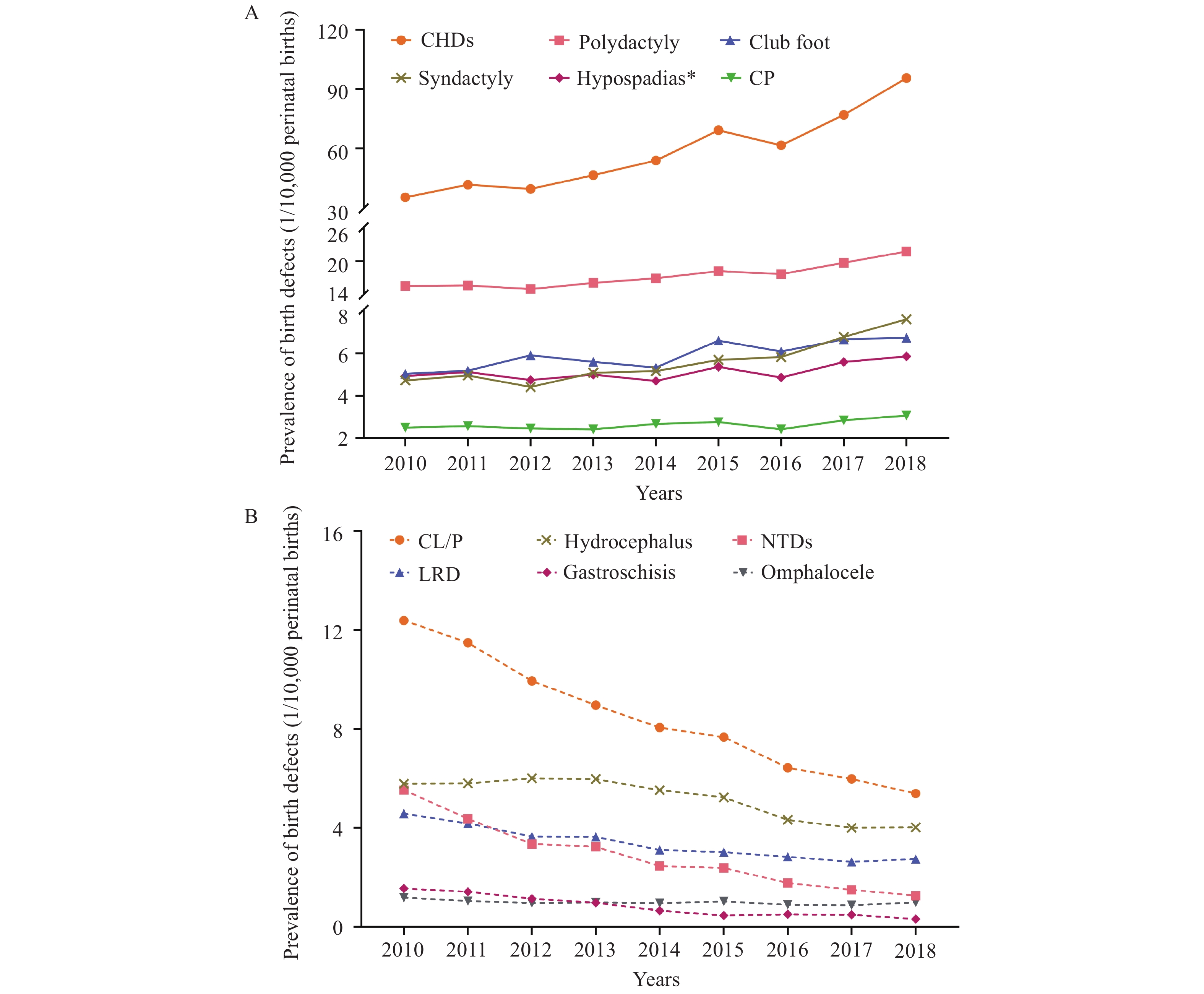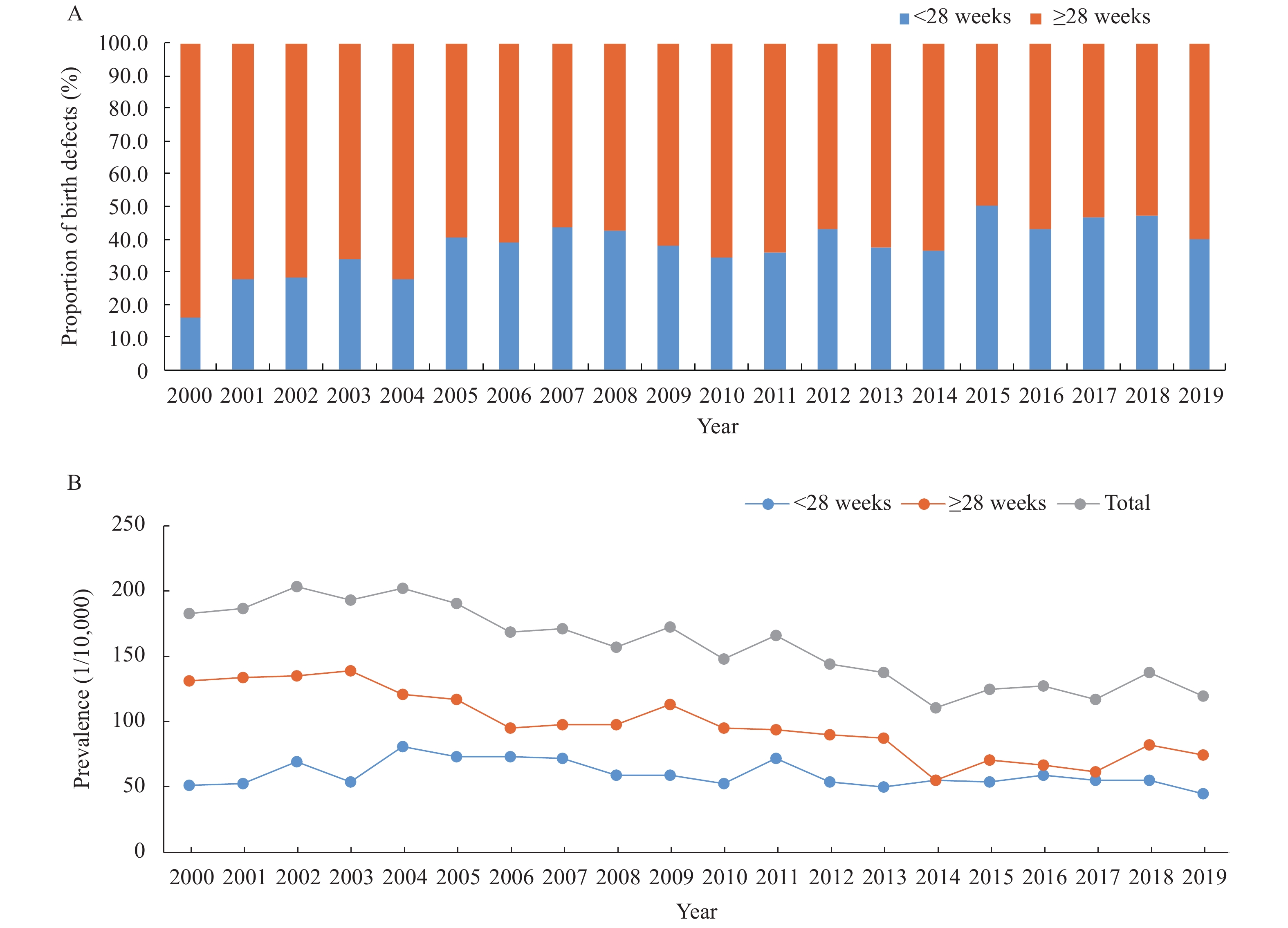2020 Vol. 2, No. 37
What is already known about this topic?
To reduce the high prevalence of neural tube defects (NTDs) in rural areas of the country, the Ministry of Health of China (currently known as the National Health Commission) initiated a nationwide folic acid supplementation program in 2009. The prevalence of NTDs have decreased from 118.9/10,000 births to 31.5/10,000 in northern China from 2000 to 2014.
What is added by this report?
Based on a population-based birth-defect surveillance system, the prevalence of selected structural birth defects in 5 counties in northern China decreased significantly from 182.8/10,000 births to 119.3/10,000 during the past two decades. Perinatal (28 gestational weeks or more) structural birth defects decreased from 83.9% of total birth defects in 2000 to 59.9% in 2019.
What are the implications for public health practice?
Improving the compliance of periconceptional folic acid supplementation, the fortification of staple foods with folic acid, and the health education surrounding early prenatal check-ups should be considered to further reduce the risk of birth defects in the population.
What is already known about this topic?
Improving their utilization of health examination is important for improving the health of menopausal and older women.
What is added by this report?
Only 32.3% and 29.7% of women had been screened for cervical cancer and breast cancer, respectively. The overall utilization rate of health examination for menopausal and older women is low. The health examination services for menopausal and older women were utilized less in the western regions and in rural areas than in the eastern and central regions and in urban areas.
What are the implications for public health practice?
The imbalance of development is an important factor affecting the utilization of health examination for menopausal and older women. It is necessary to take effective measures to improve the level of service utilization in the western region and rural areas, in order to narrow the gap in health between different regions.



 Subscribe for E-mail Alerts
Subscribe for E-mail Alerts CCDC Weekly RSS Feed
CCDC Weekly RSS Feed
